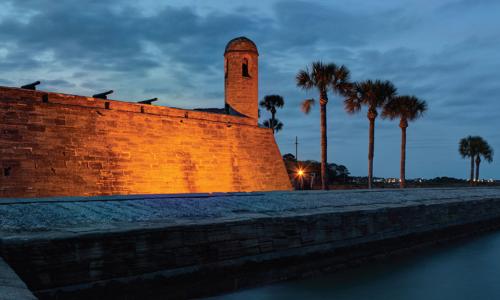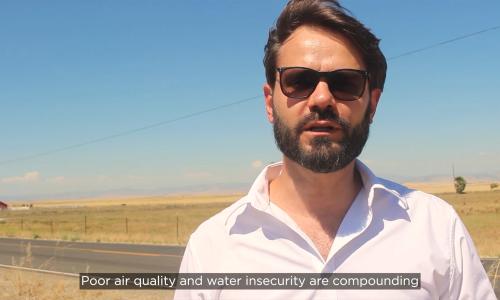This profile is excerpted from the 2014 report, "National Landmarks at Risk: How Rising Seas, Floods, and Wildfires Are Threatening the United States' Most Cherished Historic Sites."
By the end of this century, the only way to experience “America’s birthplace” may be by reading about it in history books or online. That’s because rising sea levels and increasingly powerful coastal storm surges could submerge much of Virginia’s Jamestown Island—the site of the first permanent English colony in North America—and could carry away much of its buried treasure of centuries-old artifacts.
Virtually all of the land where Pocahontas and Captain John Smith once walked is now less than five feet above water, and this small margin is slipping lower as increasingly severe storm surges and flooding erode the shoreline. To make matters worse, the land is sinking, partly because of groundwater extraction.
Despite efforts to protect Jamestown, scientists and park officials have been sounding ever-louder alarms that saving it may not be possible in an era of climate disruption.
Valued by the US public as the origin of the country’s representative democracy, Jamestown is part of the Colonial National Historical Park, which also includes Yorktown—where the last major battle of the American Revolutionary War was fought. Some 3 million visitors a year use the 23-mile scenic Colonial Parkway that connects many of the park’s historic sites; according to the National Park Service (NPS), in 2011 these visitors injected an estimated $62.6 million into the local economy.
The waters surrounding Jamestown have been rising at a rate of more than twice the global average, and this local rate is bound to increase with the melting of land-based ice (such as the Greenland and Antarctic ice sheets), as a result of the warming global climate. Projections by the Virginia Institute of Marine Science are that the state’s coastal waters could rise as much as two feet by 2050 and up to six feet by the end the century.
Warmer ocean temperatures mean that when North Atlantic storms survive the hurricane-formation process, they often are rendered stronger than at lower temperatures. In 2003, Hurricane Isabel demonstrated the destruction that even a Category 2 hurricane could inflict on this vulnerable area. The national park sustained $20 million in damages when Isabel struck at high tide, producing heavy rainfall and creating one of the highest storm surges on record in the Chesapeake Bay region; thousands of trees were uprooted and lower elevations were flooded. Before Isabel hit, the NPS had already decided to build a new visitor center on a higher elevation, but not soon enough; the existing center and its museum were badly damaged in the storm.
The park’s artifacts and archaeological sites are precious and irreplaceable; among other things, they help us better understand the lives of the early settlers and the Native Americans who preceded them. That is why Isabel’s damaging of just under a million of Jamestown’s artifacts, which had to be evacuated and then hand-dried to prevent mildew and rot, was such a wake-up call. The flooding also submerged the remains of the original furnaces of a 400-year- old glassblowing factory—one of the earliest industrial sites in North America—and almost wrecked a nearby replica, where present-day artisans fashion wine bottles and candleholders using colonial methods.
The NPS is now working to protect Jamestown’s resources and ensure that people can continue to visit its historic sites. Riprap (a breakwater made from large stones) has been installed around most of Jamestown to prevent future shoreline erosion. The original Jamestown Fort, owned and managed by Preservation Virginia, is being excavated, even though one corner of the fort has already been lost. And the NPS also is monitoring the local rate of sea level rise and planning additional research to determine how Jamestown might further adapt to this and other impacts of climate change.




